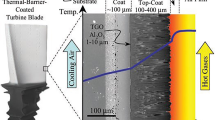Abstract
State-of-the-art automobile production uses semi-structural adhesive bonding to join hybrid materials, Examples of application in automobile production are sunroofs or windshields joined to the bodywork. This paper presents the capabilities/benefits of induction-excited thermography for non-destructive testing of semi-structural adhesively bonded components, This new quality control method offers robust, contactless and extensive testing of these bonds by a visualization of thermal irregularities in an induction-excited thermal heat transfer, caused by defects in the adhesive, By a proper adaptation of inductive excitation the detection of various defects of the adhesive seam, like delaminations, neckings and also zero volume defects, both at small sized specimen and at a large-surfaced reference application were realized.
Similar content being viewed by others
References
Hasenberg D., Dilger K. and Böhm S.: Non-destructive characterization of adhesive joints using lock-in thermography, 16th WCNDT, World Conference on Non-Destructive Testing, 2004, pp. 1-5.
Habenicht G.: Kleben: Grundlagen, Technologien, Anwendungen, 3. erw. Auflage, Adhesive bonding: Fundamentals, technology, applications, Third enlarged edition, Berlin: Springer Verlag, 1997 (in German).
Adams R.D. (Editor): Adhesive Bonding — Science, technology and applications, Woodhead Publishing LTD, Cambridge, 2005.
Burchardt B.: Scheibenkleben im Automobilbau, Glazing in Automotive Manufacturing, Kleben in der Metalltechnik und Konstruktion, Swiss Bonding, Bietigheim-Bissingen: Verlag IKD, 1990, pp. 263–279 (in German).
Adams R.D. and Drinkwater B.W.: Non-destructive testing of adhesively-bonded joint, International Journal of Materials and Product Technology, 1999, vol. 14, no. 5-6, pp. 385–398.
Maldague, X.P.V.: Infrared and Thermal Testing — Volume 3: Non-destructive Testing Handbook — Third edition, American Society for Non-destructive Testing, 2001.
Wu D.: Lockin-Thermografie für die zerstörungsfreie Werkstoffprüfung und Werkstoffcharakterisierung, Lockin-Thermography for Non-Destructive Testing and characterization of materials, PHD Thesis at the IKT of Stuttgart University, 1996 (in German).
Riegert G.: Induktions-Lockin-Thermografie — ein neues Verfahren zur zerstörungsfreien Prüfung Induction-Lockin-Thermography—A new method of Non-Destructive Testing, PHD Thesis at the IKT of Stuttgart University, 2007 (in German).
Vrana J.: Grundlagen und Anwendungen der aktiven Thermographie mit elektromagnetischer Anregung, Fundamentals and applications of active thermograph by electromagnetic excitation; Saarbrücker Reihe Materialwissenschaft und Werkstofftechnik, Aachen: Shaker, 2009, Band 18, pp. 1–141 (in German).
Author information
Authors and Affiliations
Corresponding author
Rights and permissions
About this article
Cite this article
Srajbr, C., Thiemann, C., Zäh, M. et al. Induction-Excited Thermography — a Method to Visualize Defects in Semi-Structural Adhesive Bonds of Car Body Structures. Weld World 56, 126–132 (2012). https://doi.org/10.1007/BF03321343
Published:
Issue Date:
DOI: https://doi.org/10.1007/BF03321343




